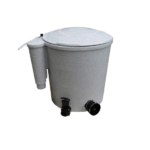We have included below seven of the most common parasites you will encounter in your pond and ‘what you may see when looking down the microscope’:
|
Parasite |
Description |
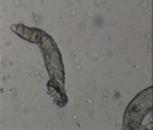 |
Skin Fluke (Gyrodactylus) A very common parasite and only problematic in large numbers. The S/F bears its own young (live bearers) and the developing embryo can often be seen inside the parent. Can be a serious cause of skin irritation and excessive mucus can be generated in patches. Difficult to eradicate completely although can be achieved. |
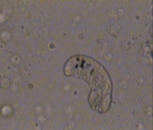 |
Gill Fluke (Dactylogyrus) Generally much smaller than the skin fluke, maggot like and easily recognisable by its four ‘eye spots’. The Gill Fluke is an ‘egg layer’, causes sever damage to the gills and is difficult to eradicate in view of the un-hatched eggs. Because of gill hyperplasia and increased mucus, the gill dwellers are afforded a high degree of protection. They must be eradicated fast or the is outlook poor. |
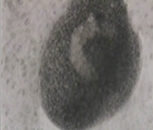 |
White Spot (Ichthyophthirius) Dormant in most fish and activated by rapid changes in temperature, also activated by environmental changes. Easily recognizable by the dark constantly turning Trophont and light ‘horseshoe’ shaped nucleus. It has a fairly complex life cycle. At 24-26deg.C., the life cycle is about 4 days and at 5deg.C., it increases to 35-40 days. It can cause severe gill damage and is reasonably easy to eradicate when the Tomites are in their free swimming stage. Vary any re-treatment times to suit life cycle. |
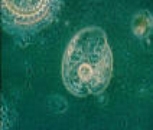 |
Chilodonella Recognisable by its slow gliding movements, often turning in circles, heart shaped. It is most virulent at temperatures of 5-10deg.C. and can be problematic in the spring before the Koi immune system has properly ‘kicked-in’. Clinical symptoms include high mortality rate and Koi charging about on the surface of the pond. It is a potentially a very dangerous parasite causing irreversible cardio-vascular damage and should be eradicated. |
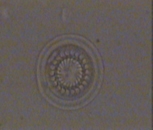 |
Trichodina Easily recognisable by is ‘Catherine wheel’ and hovering/ skimming movements. Can cause gill damage and skin lesions which become infected in substantial numbers. Clinical signs include greyish coat caused by excessive mucus production and flashing. Thrives on poor water quality, high organic content and overcrowding. Not difficult to eradicate. |
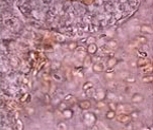 |
Costia Usually found as a ‘secondary’ parasite. Very small and recognised by its rapid flickering movements – best observed at the liquid/ mucus interface. Can survive down to 2deg.C. Clinical signs include excessive mucus, clamped fins, lethargy & respiratory distress. Causes serious tissue damage to skin & gills. Common strains not difficult to eradicate although resistant strains problematic in other areas of the country & continent. |
There are many other parasites which we have not included such as Anchor Worm, Argulus, etc. – only the common ones have been dealt with at this stage.
As treatments can vary considerably depending upon water chemistry, temperature, environment, please talk to us before treating the pond.


